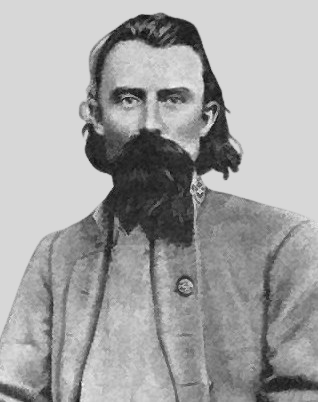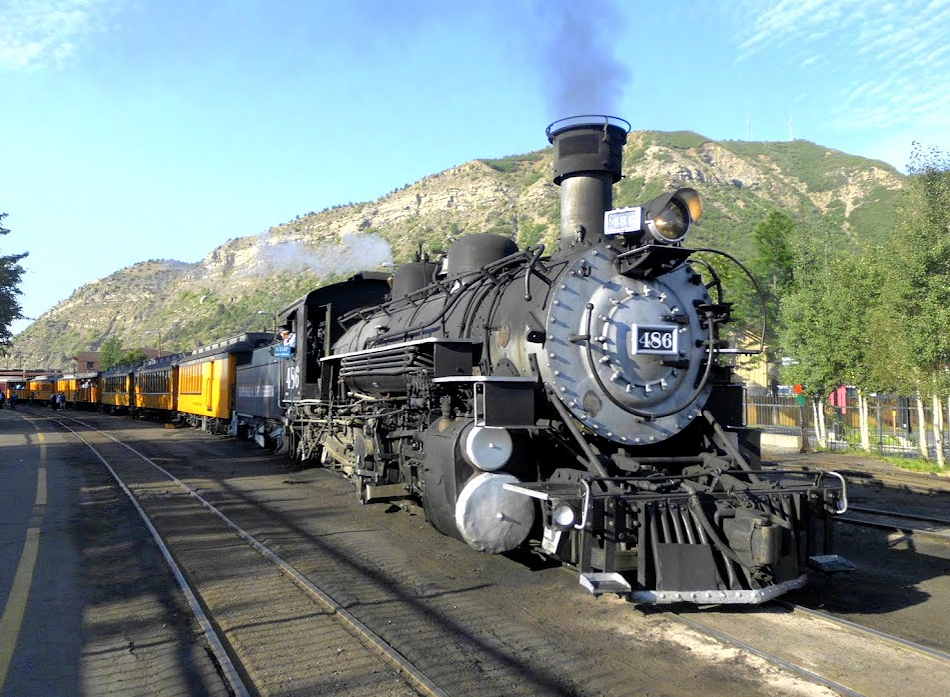|
|
|
|
|
CONFEDERATE
HISTORICAL ASSOCIATION OF BELGIUM |
|
|
NEXT MEETINGS |
|
. |
|
Saturday December 13, 2025 at 3 PM |
|
.. |
CONFEDERATE
ESPIONAGE IN MONTREAL FROM 1861 THROUGH 1865
|
|
|
.. |
|
 |
|
. |
|
Lecture by Maurice Jaquemyns:
Confederate Espionage in Montréal from 1861 through 1865.
Starting in 1860, Montréal became the largest headquarters
for Confederate secret services outside of Richmond. The
Canadian metropolis welcomed a diverse array of Southern
figures – refugees, mercenaries, spies, and smugglers. But
how can this be explained? First, the speaker will examine
the geopolitical context of relations between Canada and
the United States in order to understand the sympathetic
attitude of part of the Canadian political sphere. He then
will then focus on tracing the roles and activities of
influential Southern leaders in Montreal, particularly how
the plot to assassinate Lincoln, led by Booth, was
coordinated and financed. The presentation will be
illustrated with period photographs and a portfolio of
texts. |
|
|
.. |
|
|
Saturday February 14, 2026 at 3 PM |
|
.. |
THE FOUR
LIVES OF JOSEPH ORVILLE SHELBY
|
|
|
.. |
|
 |
|
. |
|
Lecture by Jean-Claude Janssens:
The four lives of Joseph Orville Shelby.
Joseph O. Shelby lived four lives: a first one before the
American Civil War (1830–1860), a second during the war
itself (1861–1865), a third in exile in Mexico after the
war (1865–1867), and finally, a fourth and last upon his
permanent return to Missouri, on American soil
(1867–1897). Each was marked by epic events. During the
war, Shelby took part in an incalculable number of
actions. His greatest feat of arms was undoubtedly his
great raid into Missouri in the autumn of 1863. Appointed
brigadier general on December 15 of that year, Shelby was
eventually promoted to major general on May 10, 1865, a
promotion that was never ratified, as the Confederate
government had dissolved itself on May 5. When the
Confederate Trans-Mississippi Department (theoretically
including Missouri, the contested Indian Territory,
Arkansas, Texas, and Louisiana) was forced to surrender on
May 26, 1865, General Shelby alone never offered his
surrender, preferring exile to dishonor. |
|
|
.. |
|
|
Saturday March 14, 2025 at 3 PM |
|
.. |
THE LEGENDARY TRAINS OF THE UNITED STATES IN THE 19th CENTURY
|
|
|
.. |
|
 |
|
. |
|
Lecture by Marc Vandeplas:
The legendary trains of the United States in the 19 th century. We set out with Marc to conquer the
American West aboard some of the legendary trains that
shaped the history of the United States in the 19th
century. We will devote the first part of the lecture to
the American Transcontinental Railroad, completed
in 1869. Thanks to this line, it became possible to reach
California in one week instead of several months using
earlier means of transportation, which we will briefly
discuss in the introduction. Next, we will travel to
Colorado, more than 3,000 meters above sea level, heading
toward the silver mines aboard the Durango and
Silverton Railroad. Let’s be sure not to miss the
stagecoach connection. We will then relive the period of
the Klondike Gold Rush of 1896-1899 aboard the White
Pass and Yukon Railroad, and we will end our journey
in the company of Abraham Lincoln aboard the Northern
Central Railway in Pennsylvania, arriving in time at
Gettysburg for him to deliver his famous address. |
|
|
.. |
|
|
. |
|
|
|
|
|
|
 |
 |
|
. |
|
AMBUSH AT EDINBURG |
MARYE'S HEIGHTS |
|
.. |
|
On the moonlit nights of February and March of
1862, federal soldiers described seeing a
ghostly figure on a white horse moving along
the hilltops and ridges of the Shenandoah
Mountains. The ghostly figure was Colonel
Turner Ashby on his white stallion, marking
federal positions through the trees. Union
officers constantly worried about Ashby’s
cavalry, and a possible attack at any moment.
Ashby’s mantle of mystery created fear in
their ranks. Turner Ashby was known as the
most accomplished horseman in the Confederacy.
He was raised in the Shenandoah Valley and
became an expert rider and trainer of horses.
In those peaceful prewar days, Turner won many
riding tournaments in Virginia. In these
contests he often used the title, “Knight of
the Black Prince.” It was said he rode two of
the best horses of the army. His favorite was
a huge white stallion named “Tom Telegraph”
the other a dark stallion named “Gallant
Gray.” In 1861 the charismatic Ashby organized
his friends and family members into a militia
cavalry company who became known as the
“Mountain Rangers.” These young men were
highly skilled horsemen and expert pistol
marksmen. When the war began the Mountain
Rangers officially became Company A of the 7th
Virginia Cavalry, later known as part of the
“Laurel Brigade.” At Harpers Ferry, the unit
was placed under the command of Colonel Thomas
J. “Stonewall” Jackson and began honing their
unit fighting skills against the federal army.
On July 23, 1861, Ashby was promoted to Lt.
Col. of the 7th Virginia Cavalry. By early
1862 the Laurel Brigade had reached an
enormous size of 27 infantry and cavalry
companies. Ashby was promoted to the rank of
full colonel on February 12, 1862. On the 25th
of February the federal army under the command
of Maj. Gen. Nathaniel P. Banks crossed the
Potomac River at Harpers Ferry and advanced
towards Winchester and General Stonewall
Jackson’s army. General Banks was supported by
General James Shields division. As the federal
force of over 30,000 men slowly approached
Winchester, the town was evacuated by Jackson
on March 11th. While Jackson’s army of 17,000
moved south, Col. Ashby when to work
protecting the rear, skirmishing constantly
with the federal vanguard. Ashby and his
cavalry were continuously seeking points of
attack, with audacious bold surprise attacks,
leaving the federals in a state of anxiety and
fear as to what General Jackson had in store.
Ashby was a master of asymmetric warfare,
using the valley’s terrain to his advantage.
At Fisher’s Hill, his men quietly hid in thick
woods and waited until the federals passed,
then rushed upon them from the rear. At Stony
Creek near Edinburg, Ashby’s men swooped down
from concealment capturing many prisoners as
others fled in panic. A federal officer
described Ashby’s cavalrymen as “leaping over
fences like deer.” Historians credit Ashby
with 26 ambushes against Union forces during
this time. When attacking the larger federal
force, it was the Laurel Brigade’s Captain
R.P. Chew’s Battery keeping the enemy at bay.
Another federal officer in Bank’s army said he
had learned to look for Ashby’s shells as
regularly as he did for breakfast. On the
21st, while Ashby was skirmishing with the
federals between Edinburg, Woodstock, and
Strasburg, the federal army began to retreat
north. Banks had received orders to bring his
army back. But now the tables were turned, and
Stonewall Jackson was in pursuit. Ashby’s
ambushes played a crucial role in slowing
General Bank’s advance into the valley and
covering General Jackson’s movements. Colonel
Ashby’s aggressive and independent actions
earned him a legendary reputation as the Black
Knight of the Confederacy.
|
|
. |
|
© All copyrights reserved
by John Paul Strain Historical Art
|
|
|
As the November
trees began to shed their autumn colors on
Marye’s Heights, General Robert E. Lee and
James Longstreet looked across the town of
Fredericksburg and down upon the Union Army
gathering on the opposite banks of the
Rappahannock River. The sight must have been
daunting, as General Ambrose Burnside’s Army
of the Potomac numbered over 122,000 men and
were clearly preparing for an attack.
General Lee had ordered his Army of Northern
Virginia to Fredericksburg. Lee’s plan to
counter the impending Union attack was based
on a strong defensive strategy. Lee would
position his army on the high ground of
Marye’s Heights and along a ridge from
Prospect Hill to the north. Some of his men
also commanded good defensive positions in
the town. Lee’s plan was also to place a
great number of artillery batteries atop
these ridges making them virtually
impenetrable. General Lee’s left flank at
Marye’s Heights would be commanded by
General Longstreet, while the right flank
along Prospect Hill would be commanded by
Stonewall Jackson when he arrived from
Winchester. On the 21st of November,
General Burnside sent a formal communication
to the mayor of Fredericksburg demanding the
town surrender. The note claimed his men had
been fired upon by soldiers from within the
town and any further resistance would result
in the shelling of the city. The mayor
passed along the note to General Lee, who
decided the town needed to be evacuated.
Around midday General Burnside ordered Union
artillery to open fire on Fredericksburg.
Confederate batteries on Marye’s Heights and
surrounding ridges responded with return
fire. General Lee, Longstreet and Lt.
Colonel Edward Porter Alexander rode to the
heights to observe the Union bombardment
firsthand to determine if it signaled an
all-out imminent attack. This is when
General Lee made his famous remark: “It
is well that war is so terrible - we should
grow too fond of it.” Soon the
artillery fire became a duel between
artillery batteries lasting about four
hours. Lee ordered his artillery to conserve
ammunition for the battle to come. This
action was the first major hostile action in
the area. As the rest of Lee’s army arrived,
southern positions were reinforced and
infantry dug fighting trenches. By the time
the Union army attacked, Marye’s Heights
would have 47 cannons in position, and
Porter Alexander was promoted to full
colonel on December 5th commanding their
operation. Below the heights was
Longstreet’s Georgia Infantry Brigade
positioned behind a long stone fence,
providing a perfect barrier against an
assault. During the Battle of Fredericksburg
on December 13, 1862, General Burnside
ordered a total of fourteen separate frontal
assaults against Marye’s Heights. All these
charges were meant to break the Confederate
line at the stone wall, but all were cut
down with horrific casualties. Over 6,000
Union soldiers fell at Marye’s Heights,
proving it to be impenetrable. Colonel
Alexander said afterward: “It was not a
battle; it was a slaughter.” That night
with wounded soldiers still on the
battlefield, the northern lights shone in
the sky. Many confederates who had never
seen the northern lights took it as a sign
that God himself was celebrating a southern
victory. The northern troops saw the lights
as the souls of their departed comrades
rising to heaven.
|
|
. |
|
© All copyrights reserved
by John Paul Strain Historical Art
|
|
|
|
|
For information or online orders: |
|
www.johnpaulstrain.com |
|
. |
|
|
|
|
|
|
|
|
|
|